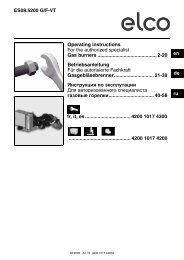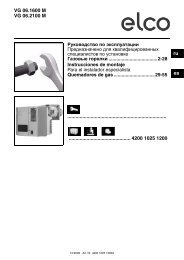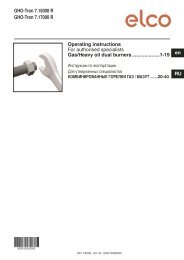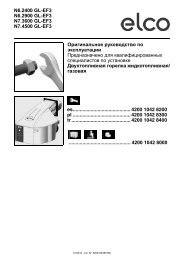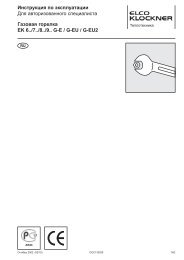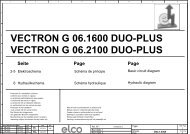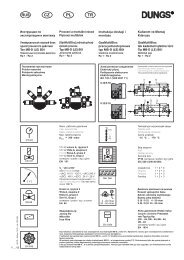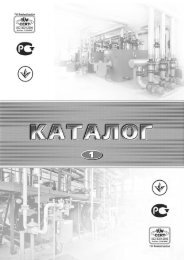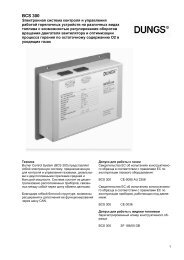GHO-Tron 5 R RUS
GHO-Tron 5 R RUS
GHO-Tron 5 R RUS
Create successful ePaper yourself
Turn your PDF publications into a flip-book with our unique Google optimized e-Paper software.
Function<br />
6/16<br />
21<br />
420010264101 <strong>GHO</strong> - TRON 5.5000 / 5.5800 R<br />
During the first phase of the valve proving test called «Test1», atmospheric pressure<br />
must exist in the length of pipe between the valves to be tested.<br />
In plants with a vent pipe to atmosphere, atmospheric pressure is available if the valve<br />
proving test is made prior to or during the prepurge time.<br />
In plants without vent pipe, atmospheric pressure is made available as the valve proving<br />
system opens the valve on the burner side during the time «t4».<br />
If the valve proving test is performed after burner operation, the valve on the burner side<br />
after the controlled shutdown can be kept open until «t4» has elapsed, thus lowering the<br />
pressure in the test space and making certain its gas content is burnt off in the combustion<br />
chamber during the postpurge time.<br />
Prerequisite for this procedure is a suitable control program of the burner control as provided<br />
by burner controls type LFE..., LFL..., LGK... or LEC...<br />
The test space is closed off after evacuation.<br />
During the first test phase «Test1», which then follows, the LDU11... checks with the<br />
pressure switch if the atmospheric pressure in the test space is maintained.<br />
If the valve on the mains side is leaking, causing the pressure to rise above the switching<br />
point of the pressure switch, the LDU11... will trigger an alarm and initiate lockout.<br />
The program indicator then stops to indicate «Test1».<br />
If the pressure does not increase because the valve closes correctly, the LDU11... continues<br />
its program with the second test phase «Test2».<br />
For that purpose, the valve on the mains side is opened during «t3» so that the test<br />
space is pressurized («filling» the test space).<br />
During the second test phase – if the valve on the burner side is leaking – this pressure<br />
must not fall below the switching point of the pressure switch. If it does, the LDU11... will<br />
initiate lockout also, thus preventing the burner from starting up.<br />
On successful completion of the second test phase, the LDU11... closes the internal<br />
control loop between terminals 3 and 6 (circuit path: terminal 3 - contact «ar2» - terminals<br />
4 and 5 - contact III - terminal 6).<br />
This control loop is normally included in the burner control’s start control loop.<br />
After the control loop has been closed, the programming mechanism of the LDU11...<br />
returns to its start position to switch itself off.<br />
During these so-called idle steps, the positions of the programming mechanism’s control<br />
contacts remain unchanged.<br />
Building Technologies CC1N7696en<br />
HVAC Products 25.04.2005<br />
EN




